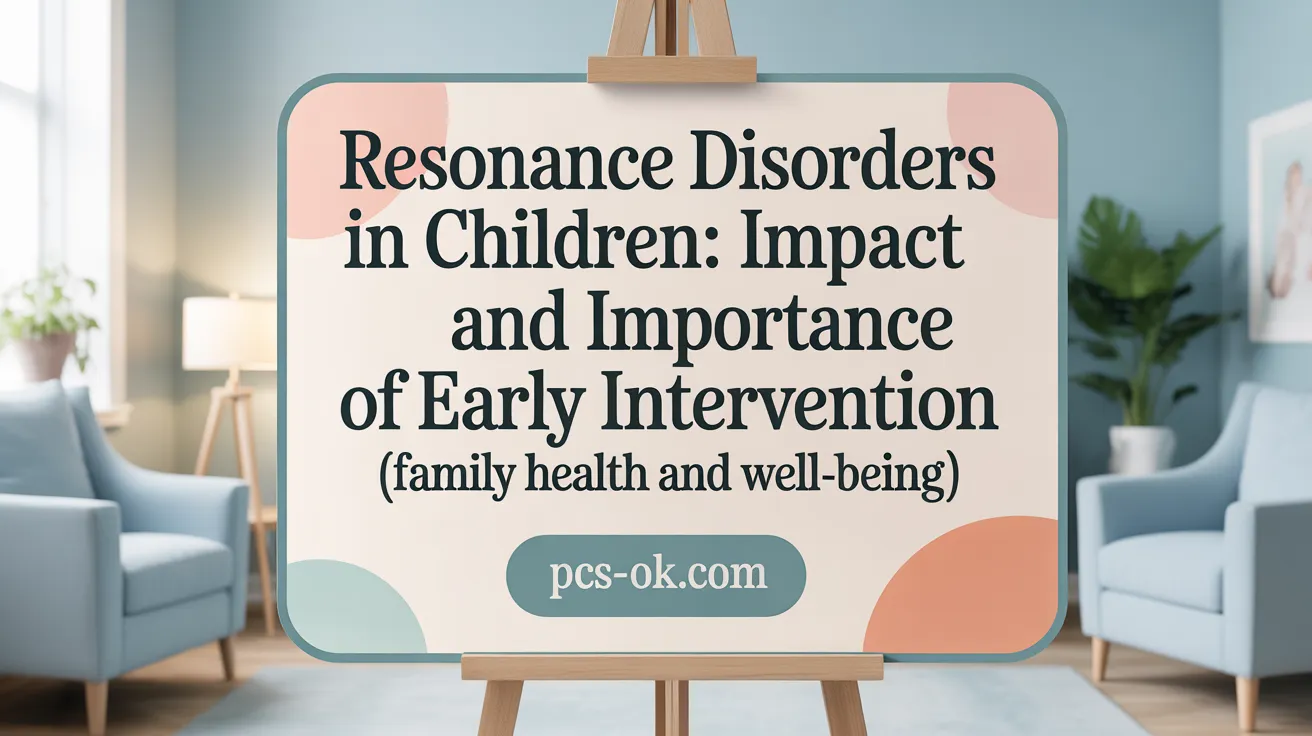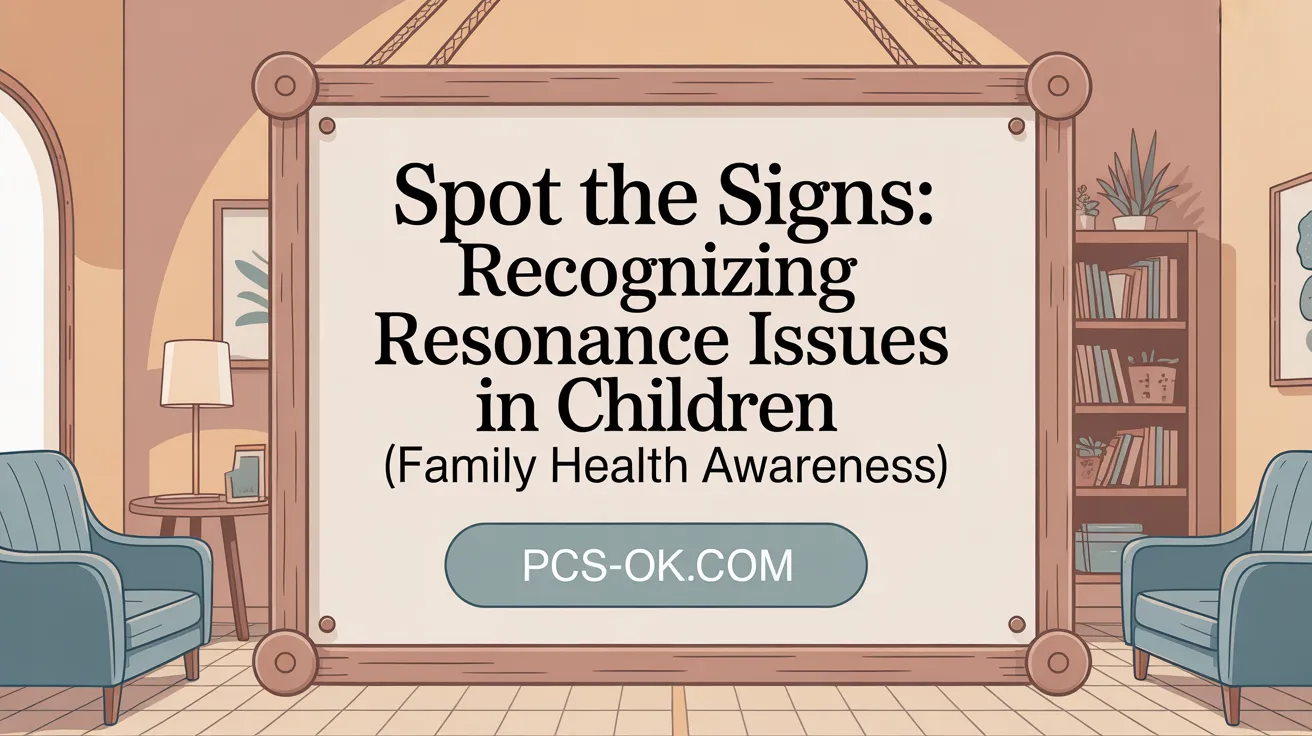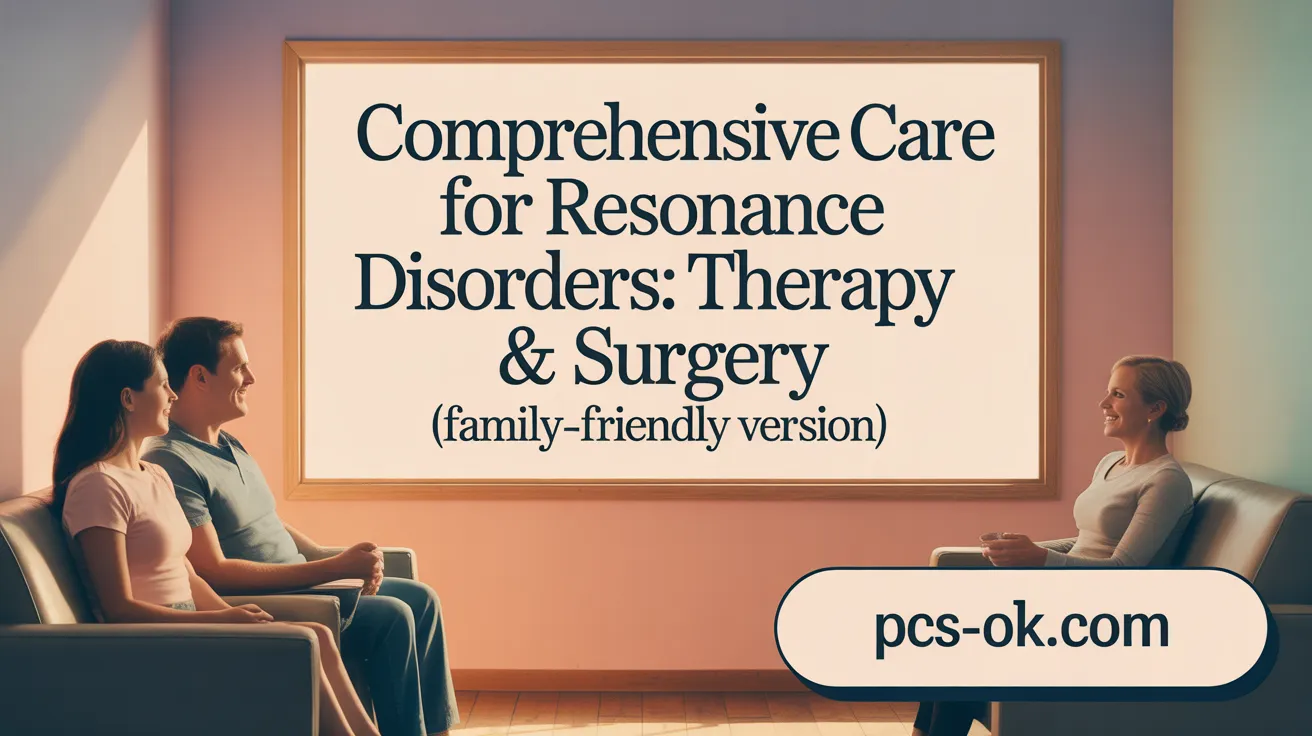Helping Children With Resonance Disorders Thrive
Introduction to Resonance Disorders
Resonance disorders in children significantly impact how their voice sounds and how easily they can be understood. These disorders arise when there is a disruption in the normal airflow and sound vibrations that occur in the throat, mouth, and nose during speech. This article provides a comprehensive overview of the causes, symptoms, diagnosis, and treatment options for resonance disorders, aiming to empower parents, caregivers, and professionals to help affected children thrive.
What Are Resonance Disorders and How Do They Affect Children?

What are resonance disorders in children?
Resonance disorders in children are speech issues caused by abnormal sound vibrations in the mouth, nose, and throat. These abnormalities often stem from problems with the velopharyngeal mechanism—the system involving the soft palate and the back of the throat that controls airflow between the oral and nasal cavities.
Children with resonance disorders may have difficulty producing clear speech because of imbalances in nasal and oral resonance. These can include too much nasal sound (hypernasality), too little nasal resonance (hyponasality), sound trapped in the throat or nasal passages (cul-de-sac resonance), or combinations of these conditions.
The causes of these disorders vary. Some common issues include structural abnormalities like cleft palate or enlarged adenoids. Other causes may involve neurological conditions affecting soft palate movement or incomplete development of necessary speech structures.
Symptoms often include muffled speech, a nasal tone, or speech that sounds congested or tinny. These speech issues can interfere with effective communication, making it harder for others to understand the child.
Diagnosis involves detailed speech assessments, imaging tests such as videonasoendoscopy, and physical examinations. A multidisciplinary team usually conducts these evaluations, which help determine the exact type and cause of the resonance disorder.
Treatment approaches can include speech therapy to improve speech production, surgery to correct structural deficits, or prosthetic devices to aid in proper velopharyngeal function. Early diagnosis and intervention are vital for improving speech clarity and helping children communicate more effectively.
This condition is most common among children with craniofacial anomalies, especially those with cleft palate. However, any structural or neurological issue affecting the soft palate or nasal passages can contribute to resonance disorders.
Causes and Contributors to Resonance Disorders in Children

Resonance disorders in children can stem from a variety of structural and functional causes that interfere with normal speech production. Understanding these causes helps in diagnosing and planning effective treatment strategies.
Structural causes are among the most common and include anatomical issues such as cleft palate and submucous cleft palate. These conditions create abnormal openings between the oral and nasal cavities, which can result in hypernasality—an excessive nasal resonance during speech.
Enlarged tonsils and adenoids are another structural factor that may block normal airflow, leading to hyponasality, where nasal resonance is insufficient. Small mouth openings and small or obstructed nasal passages can contribute to cul-de-sac resonance, which causes muffled or distorted speech.
Certain syndromes and congenital anomalies also predispose children to resonance problems. For example, children with 22q11.2 Deletion Syndrome, Neurofibromatosis, or Kabuki syndrome often have craniofacial abnormalities that affect velopharyngeal function.
On the functional side, neurological conditions that impair muscle control play a significant role. Disorders such as childhood apraxia of speech or neurological impairments can disrupt the coordination needed for proper velopharyngeal closure, resulting in mixed resonance patterns.
Obstructions in the nasal airway, caused by allergies, colds, or a deviated septum, can lead to hyponasality by limiting airflow and sound vibration in the nasal cavity.
Additionally, issues with motor planning and previous surgical interventions, such as palate surgery, may lead to incomplete or inconsistent closure, contributing to complex mixed resonance issues.
Below is a table summarizing common causes and their effects:
| Cause | Description | Typical Resonance Pattern |
|---|---|---|
| Cleft palate/submucous cleft | Structural opening between oral and nasal cavities | Hypernasality |
| Enlarged tonsils/adenoids | Block airflow, impeding nasal resonance | Hyponasality |
| Syndromic craniofacial anomalies | Congenital conditions affecting facial structure | Mixed resonance |
| Neurological impairments | Disrupted muscle coordination for speech | Mixed resonance |
| Obstructions (allergies, colds, deviated septum) | Physical blockage of nasal passages | Hyponasality |
| Previous palate surgery | Inconsistent velopharyngeal closure | Mixed or hypernasal resonance |
Understanding the causes of resonance disorders is crucial for targeted intervention, whether through speech therapy, surgical procedures, or a combination of approaches. Proper diagnosis involves a multidisciplinary team including speech-language pathologists, ENT specialists, and surgeons, who assess speech patterns and nasal airflow to determine the underlying issues.
Recognizing Signs and Symptoms: A Guide for Parents and Caregivers

Parents and caregivers can identify resonance disorders in children by paying attention to several speech patterns that may indicate underlying issues. One common sign is hypernasality, where the child’s speech sounds overly nasal, almost as if the voice is echoing through the nose. This results from excessive nasal resonance during speech, making vowels and voiced sounds sound high-pitched and nasal.
Conversely, hyponasality occurs when there is too little nasal sound, giving the speech a muffled or “stuffy” quality. This often happens if the child has nasal blockages such as enlarged tonsils, allergies, or a deviated septum. The speech may sound congested or lacking in nasal quality.
Another observation is cul-de-sac resonance, which causes speech to sound muffled, mumbled, or tinny. This occurs when sound gets trapped in the throat or nose, often because of small mouth openings, large tonsils, or other blockages.
Besides these speech qualities, children with resonance issues might exhibit nasal air emission. This involves a noticeable escape of air through the nose during speech, especially on pressure consonants like /p/ or /b/. Such emission can make speech hard to understand.
Weak consonants and abnormal articulation are also common symptoms, as the airflow necessary for clear speech isn’t properly maintained. Children may produce short utterances or struggle with pronunciation.
These symptoms impact speech intelligibility, meaning others might have difficulty understanding the child. The speech may sound muffled, high-pitched, or overly nasal, which can affect social interactions and academic communication.
Early detection is essential. If you notice persistent nasal sounding, muffled speech, nasal air emission, or difficulty with speech clarity, consult a speech-language pathologist or ENT specialist. Early diagnosis allows for timely intervention using speech therapy or, in some cases, surgical procedures to correct structural issues, helping children achieve better speech and communication skills.
Diagnosing Resonance Disorders: Comprehensive Assessment Approaches

Resonance disorders are diagnosed through a detailed and multidisciplinary process involving various specialists, primarily speech-language pathologists and ENT (ear, nose, and throat) doctors. These professionals collaborate to evaluate both the functional and structural aspects of speech to identify the underlying cause of the resonance issue.
Speech assessments play a vital role. Perceptual evaluations involve listening to the child’s speech to detect abnormal nasal qualities such as hypernasality (excessive nasal resonance), hyponasality (insufficient nasal resonance), or cul-de-sac resonance (muffled speech). Speech-language pathologists carefully analyze speech samples to determine the pattern and severity of resonance abnormalities.
Instrumental diagnostics provide a more visual and measurable understanding of the resonance issues. Nasoendoscopy allows direct visualization of the velopharyngeal mechanism, helping identify deficiencies or abnormal openings between the mouth and nose. Videofluoroscopy offers dynamic X-ray imaging during speech, capturing real-time movement of speech structures. Nasometry measures nasal airflow and sound energy to quantify the degree of nasal resonance, assisting in differentiating between different types of resonance disorders.
Physical exams are conducted to detect structural abnormalities. These examinations check for factors such as a cleft palate, enlarged adenoids, deviated septum, small mouth opening, or other anatomical issues that could obstruct or alter airflow and sound movement.
A comprehensive, multidisciplinary evaluation combines all these assessments — perceptual speech analysis, instrumental diagnostics, and physical examination — providing a full picture of the child’s speech and structural health. This integrated approach ensures accurate diagnosis, which is essential for choosing the most effective treatment plan, whether it involves speech therapy, surgical correction, or both.
| Diagnostic Method | Purpose | What It Reveals | Additional Notes |
|---|---|---|---|
| Perceptual Speech Evaluation | Assess speech quality | Nasal airflow, resonance patterns | Initial screening, subjective but essential |
| Nasoendoscopy | Visualize velopharyngeal closure | Structural and functional velopharyngeal status | Direct view, performed in clinic |
| Videofluoroscopy | Dynamic imaging during speech | Movement of speech mechanism | Provides real-time functional data |
| Nasometry | Measure nasal acoustic energy | Degree of nasal resonance | Quantifies hyper- or hyponasality |
| Physical Examination | Inspect anatomy | Structural abnormalities like cleft or enlarged tonsils | Often the first step |
By combining clinical expertise with technological tools, clinicians can accurately diagnose resonance disorders, ensuring appropriate intervention and improved speech outcomes for children.
Effective Treatment and Specialized Therapeutic Services to Support Children

Resonance is a vital aspect of speech that results from vibrations in the throat, mouth, and nose. It influences the overall quality of voice and speech clarity. In children, resonance can sometimes be affected by structural or functional issues, leading to what are known as resonance disorders.
What are resonance disorders? Resonance disorders occur when there is an abnormal pattern of airflow and sound through the mouth, nose, and throat. Common types include hypernasality, hyponasality, cul-de-sac resonance, and mixed resonance. Each type affects speech differently and often shares underlying causes such as structural abnormalities, neuromuscular issues, or blockages.
Types of resonance issues
- Hypernasality: Excess nasal resonance during speech, often caused by an opening between the nose and mouth, such as cleft palate or neurological disorders.
- Hyponasality: Reduced nasal resonance, resulting from obstructions like enlarged tonsils, adenoids, allergies, or a deviated septum.
- Cul-de-sac resonance: Sound gets trapped in the throat or nasal passages due to a small mouth opening or blockage, producing muffled speech.
- Mixed resonance: Features of more than one type, involving complex problems with soft palate function and airflow.
Causes of resonance disorders Structural issues like cleft palate, swollen tonsils, or a small mouth opening frequently lead to resonance problems. Neurological conditions may impair muscle control and soft palate movement, resulting in velopharyngeal dysfunction. Other causes include allergies, infections, or previous palate surgeries.
Impact on speech Children with resonance disorders often struggle with speech clarity, producing muffled or nasal sounds, high-pitched voice quality, and articulation errors. These issues can hinder effective communication and social interaction.
Diagnosing resonance disorders Diagnosis involves a team of specialists, including speech-language pathologists, ENT doctors, and surgeons. Evaluation methods include physical exams, speech assessments, imaging procedures like video nasoendoscopy and fluoroscopy, and standardized speech tests.
Treatment options Management typically begins with speech therapy designed to improve muscle function and speech production. Techniques may include visual and auditory feedback, exercises to enhance velopharyngeal closure, and articulation training.
When is surgery needed? If speech therapy alone does not resolve the resonance issues, especially in cases of structural abnormalities like cleft palate, surgical intervention may be necessary. Procedures such as pharyngeal flap or sphincter pharyngoplasty can help restore normal velopharyngeal function.
Pre- and post-surgical therapy Many children benefit from speech therapy before and after surgery. Pre-surgical therapy prepares the soft palate muscles and establishes baseline speech patterns. Post-surgical therapy supports healing, reinforces proper muscle function, and helps improve speech clarity.
Comprehensive care approach Treating resonance disorders involves a multidisciplinary team approach, integrating therapy and surgical options. Speech-language pathologists develop personalized plans that consider the child’s specific diagnosis and severity. Surgeons address anatomical issues, while ENT specialists manage airway and nasal conditions.
| Aspect | Description | Additional Details |
|---|---|---|
| Main Causes | Structural, neurological, or functional issues | Cleft palate, swollen tonsils, nerve damage |
| Common Symptoms | Nasal speech, muffled voice, articulation errors | Difficulty in understanding speech |
| Diagnostic Tools | Speech evaluation, imaging techniques | Video nasoendoscopy, fluoroscopy |
| Treatment Strategies | Speech therapy, surgical correction | Exercises, muscle strengthening, structural repair |
| Team Involved | Speech therapists, surgeons, ENT specialists | Coordinated assessment and management |
Understanding and addressing resonance disorders require early detection and comprehensive treatment strategies. When combined, therapy and surgical interventions can significantly improve a child’s speech clarity and confidence, supporting better communication and social development.
Empowering Children Through Awareness and Support
Understanding resonance disorders and their impact on children’s speech is a vital step toward helping them communicate effectively and confidently. Early recognition of symptoms, accurate diagnosis, and a collaborative treatment approach involving speech therapy and surgery when necessary can significantly improve speech clarity and quality of life. Specialized therapy services tailored to each child’s unique needs ensure they receive holistic care that addresses both physical and functional challenges. With informed parents, skilled clinicians, and comprehensive interventions, children with resonance disorders can thrive and achieve their full communication potential.
